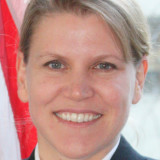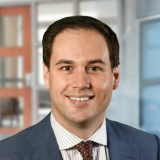As part of some consulting work, I recently worked with a health system on recruiting two new specialists within the same specialty at their hospital. This seemed like a golden opportunity for them. Not only is there a shortage of specialists nationwide, but landing two specialists at once would be a great service to their patients and the local community.
One of them — Dr. A, we’ll call him — was a new graduate out of a solid fellowship training program looking to be a full-time clinician and grow his practice. He already had roots in the community and seemed like a great fit.
The other — Dr. B — was a mid-career physician who had previously been in private practice, then in an academic attending position, and was now looking to further his career in a health system and become part of the medical staff leadership on an eventual path to physician administration.
Both candidates were outstanding, and both seemed like great fits for the hospital I was hired to advise — one in a clinical role and the other in a hybrid clinical/administrative one. After interviews and reference checks, I gave the green light to administration for both. The CEO called me back and thanked me for my services and said, “We’ll take it from here.”
I was surprised to learn that only the new grad took the job.
When I asked the hospital CEO what happened, he said, “We couldn’t make it work with Dr. B. He wanted more compensation, and we just couldn’t do it.”
That struck me as quite odd, since Dr. B didn’t seem like the hardball negotiator type and seemed genuine about his career goals rather than strictly valuing compensation above all else. So, I pressed for some details.
“Well, we have a compliance team, and we pay this consulting firm to do our fair market value evaluations, so yeah, it just didn’t work out.”
Fair. Market. Value.
I paused and replayed those words in my head a few times.
Fair. Market. Value.
Again, I pressed for even more details. I really wanted to know how this hospital missed out on what seemed like such a great opportunity.
“Well, we offered our base compensation model, which is 75th percentile of Medical Group Management Association (MGMA),” said the CEO. “Dr. A was fine with that. For Dr. B, since he was also going to be section chief, that’s 0.2 Full Time Equivalent with a 0.8 clinical component. The 0.2 is paid hourly based on the approximate scope of work of the administrative component, and the 0.8 is paid according to the market rate of wRVUs for the region.”
I quickly looked at my reference charts and did some mental math while I still had him on the phone.
“So, you offered Dr. B less total compensation than a new graduate straight out of fellowship, by over $50,000 dollars?” I asked incredulously.
“Well, yeah, I guess we did. We made a fair market value offer,” he responded.
I decided I had heard enough, so I thanked him and hung up the phone. I then turned on the TV to relax a bit and tuned in to a sports talk show discussing possible Most Valuable Player (MVP) candidates for this season in professional football.
The two analysts on TV were going at it, debating which player they thought was this year’s MVP and why. “Best player on the best team!” one said. “Best individual performance based on statistics!” responded the other. “What about experience and track record as a context for the award? Can a first-year rookie player really be an MVP??” shot back the first. “What about jersey sales? That’s value too! Monetary value!” exclaimed the other.
The debate raged on.
And so did mine, internally.
Fair. Market. Value.
How do you compensate physicians in a manner that is “fair”? What does “fair” mean to a physician versus a hospital CEO?
And what is the “market” being referred to? Is it like real estate, where a 3,000-square-foot home in California may cost millions of dollars more than the exact same home in Oklahoma? Are we talking inventory supply and demand here?
What about “value”? Is a new graduate fresh out of fellowship training really more “valuable” than an experienced physician with a strong clinical skill set and proven track record in physician leadership, but who may not see as many patients in clinic? Who’s to say?
Recent congressional legislation resulting in cuts to physician reimbursement has once again brought this issue to the forefront of American medicine, politics, and socioeconomic debate. My personal answer to all of these questions is a resounding “I have no idea.” I have no idea how to exactly value physician compensation according to a defined market that is somehow fair to all parties involved. But what I do know, and what I can say with confidence, is that physicians should not be compensated based on numbers and averages and clinical productivity and approximate hourly figures, as is happening in large part currently.
There is value in measuring more than just wRVUs generated via clinic visits and procedural encounters. There is value in supporting physicians’ growth in leadership within health systems and rewarding these efforts with executive-style compensation packages. It is fair to consider issues like supply and demand, inflation, overhead cost, and reimbursement patterns in determining how much physicians get paid. It is fair to take into account the cost of medical education in the U.S. (and higher education as a whole, for that matter) in determining physician fee structures.
The market in which physicians may practice should also be evaluated in terms of local, regional, and national factors, and even patient complexity. While MGMA data is helpful in many ways, it should not be an arbitrary standard that can be misinterpreted as a surrogate marker of a physician’s individual work ethic.
Most importantly, it is up to us as physicians to learn how to navigate these conversations. No, we cannot arbitrarily demand higher compensation because we work hard and have stressful jobs. No, we cannot approach executive leadership with the attitude that they are useless administrators that get paid way too much money to do meaningless jobs. No, physicians are not superior human beings just because.
Being a physician does mean though — in my opinion — that we have committed to the lifelong learning process. But, this does not have to mean just a lifetime of learning medicine. If you can learn to practice medicine, you probably could be a rocket scientist if you really wanted to and tried hard enough.
So it’s up to us to learn what phrases like “fair market value” mean to different people in our ecosystem. It’s up to us to approach executive leadership with the understanding that they have a different skill set than we do, and while a hospital CEO “could never spend a day in a doctor’s shoes” as is common cliché in the cafeteria, the sad truth is that most of us probably couldn’t spend a day in theirs either.
I don’t know what ended up happening with Dr. B, but I hope he is happy and fulfilled wherever he is. Whether this particular hospital CEO failed to realize what value he brought to the table or whether Dr. B failed to adequately convey it, the end result in this case ended up being the same — the patients and the community lost.
Sadly, cynicism among physicians may likely further the message that we are all doomed to be treated like employees at a fast food burger joint anyway, so what difference does it make? But maybe — just maybe — if we respect what we don’t know and try to understand how to be our own advocate in health systems, then we can stem the tide and physicians can strengthen their foothold both professionally and financially.
How can physicians better advocate for fair compensation that reflects both their clinical and leadership value? Share in the comments.
Dr. Neal Kaushal is a gastroenterologist in Oklahoma City, OK. He serves as executive director of general GI and endoscopy at OU Health (hospital of the University of Oklahoma Health Sciences Center). He also has a specialty in business operations and is passionate about the intersection of business and medicine to support patient access to care. He enjoys playing ball and going on walks with his three Dobermans, Rani, Riya, and Rishi. Dr. Kaushal is a 2024–2025 Doximity Op-Med Fellow.
Animation by Jennifer Bogartz







